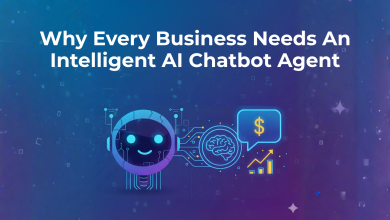AI and CMMS together represent perhaps one of the significant new technology innovations in maintenance management for the industry’s fast-evolving climate. This transformation is changing the landscape of maintenance management methods applied by industries, from traditional reactive programs to high-tech predictive directions when companies must foresee and prevent failures before they happen. The incorporation of AI into the CMMS platform is beyond an upgrade; it is a true game changer that would guarantee unmatched operational efficiency, cost savings, and asset longevity across industries.
Scheduled interventions and reactive responses to equipment failures have been the traditional methods for the maintenance industry, often leading to unnecessary downtime, real costs, and resource wastage. This approach is now being turned on its head by AI-driven CMMS products, which leverage machine learning algorithms, data analytics, and predictive modeling to change maintenance from a cost center to a strategic competitive advantage. Those companies that have deployed these intelligent systems report astonishing improvements: an up to 50% reduction in unplanned downtime, 30-40% reduction in maintenance costs, and greatly enhanced equipment lifespan, while at the same time increasing workplace safety and operational reliability.
Understanding AI-Enhanced CMMS: The New Maintenance Paradigm
Modern CMMS systems have really come a long way since being just record-keeping systems of the past. The cutting-edge AI-powered CMMS today really acts as an integrated maintenance curator, wrapping the standard maintenance management features in machine learning, real-time analytics and predictive modeling. Reports indicate AI-based CMMS reduce operational costs by up to 30% and can minimize unplanned downtimes by almost 45%.
Through the integration of many data streams like IoT sensors, historical maintenance records, equipment performance metrics, and environmental conditions, an AI-based CMMS helps create a digital twin of the asset health. This amalgamation drives maintenance as a discipline to transform into a strategic operations for anticipating issues even before they have occurred, rather than simply reacting after the fact.
Revolutionizing Preventive Maintenance Through Intelligent Automation
Predictive Analytics and Smart Scheduling
Preventive maintenance, in its traditional sense, functions based only on a fixed schedule determined either by the manufacturer or historical averages. AI, on the other hand, obtains this problem by evaluating the conditions and use patterns of the equipment, so that it becomes possible to optimize maintenance timing. What machine learning does is to evaluate huge amounts of sensor data to identify very subtle patterns that indicate when maintenance is really needed instead of following rigid calendars.
For instance, in the case of oil changing engines at 500-hour intervals without respect to condition, AI systems such as those based on analysis of oil viscosities, contamination levels, temperature fluctuations, and usage intensity could suggest replacement intervals for individual pieces of equipment. This condition-based specification could result in extending the life of the asset by 15-20%, together with a significant reduction in unnecessary maintenance activities.
Real-Time Anomaly Detection
The CMMS programs, based on AI, are exceptional when it comes to ongoing basis monitoring and fault detection. The advanced techniques check data streams arriving from vibration sensors, temperature monitors, pressure sensors, and acoustic sensors for any deviation from normal operating parameters. Whenever glitches are detected, the system automatically raises a work order, assigns the right technicians, and provides all necessary background information to assist the technician in effecting repairs.
This feature is especially important in critical mission environments, for example, a large aerospace manufacturer employs an AI-powered CMMS that helps monitor robots on an assembly line in the analysis of torque, current, and environmental settings to predict performance issues even before they occur. At the end of six months, millions in lost time were saved with this system-and without unplanned stoppages.
Intelligent Resource Optimization
AI mechanisms study the historical maintenance trend patterns, requirements pertaining to technician availability, needed skill sets, and parts inventory for optimal resource allocation. This system automatically schedules maintenance work on any planned downtime, assigns tasks to the most qualified technicians, and ensures that all necessary parts arrive when needed. This orchestration mitigates downtime for maintenance and quashes the waste of resources.
Transforming Corrective Maintenance with AI Intelligence
Accelerated Root Cause Analysis
AI-powered CMMS platforms help improve the efficacy of corrective maintenance, especially when equipment failures are reported. Machine learning algorithms study system logs, error reports, and performance data, rapidly identifying root causes to shorten troubleshooting time and, thus, resolve problems faster. AI can provide precise corrective actions based on previous successful repairs of similar failure modes by correlating failure patterns among different like assets.
Automated Response and Work Order Generation
The process by which AI can detect a fault in time to trigger a corrective maintenance workflow is a modern innovation. When sensors are measuring anomalies or conditions worthy of attention or failure, the system automatically generates work orders of high priority, notifies work personnel, and provides diagnostic input from which repair actions can be inferred. This way, the long delay experienced in letting maintenance people know by manual identification of a problem or generating a work order is eliminated.
Pattern Recognition and Failure Prevention
The systems work on a continuous basis and learn from corrective maintenance work so as to build up the knowledge bases to avoid failings of similar nature in the future. Using failure modes, repair history, and operational conditions, machine learning algorithms detect patterns that can be helpful in enhancing preventive maintenance procedures and modifications to equipment.
Real-World Applications and Success Stories
Manufacturing Excellence
In manufacturing environments, AI-based CMMS platforms are augmenting equipment reliability and operational efficiency to a great extent. Companies are claiming 25-30% reductions in maintenance costs and 20-50% cut in unplanned downtimes with the adoption of comprehensive AI maintenance strategy.
The regional power utility serves as perhaps the best example in the successful adoption of AI-based CMMS for monitoring hundreds of transformers. Voltage fluctuations were noted as abnormal in one of the substations generating critical alerts onto the system. The alerts, at the end, pointed to the identification of the failing component that could have led to the outage of an entire city.
Transportation and Infrastructure
The transportation industry has adopted AI-enabled predictive maintenance tools for safety and reliability. The partnership between the London Underground and AI start-ups illustrates the trend, as a predictive analytical tool is used by the Underground to predict component failure weeks before the actual event, thus improving system reliability and passenger safety.
Implementation Strategies and Best Practices
Data Foundation and Integration
A well-structured data infrastructure and stringent quality management ensure successful implementation of AI. Comprehensive data collection processes, ensuring sensor accuracy and calibration, and consistent standards maintained across the systems are mandatory for an organization. AI quality may suffer severely on account of poor data quality, thus, making data governance a critical success factor for AI.
Change Management and Training
Shifting to AI-supported maintenance is a major organizational change management exercise. Technicians will have to train to learn the new tool and methods in process, while management will learn how to make decisions from data in new ways. Most successful implementations emphasize user adoption, giving necessary training and continued support to maximize use of the system.
Phased Implementation Approach
It is considered best practices to initiate pilot programs on selected critical assets before any potential wider implementation across the systems. This gives organizations an opportunity to develop methods, confirm advantages, and garner organizational buy-in prior to full deployment.
Overcoming Implementation Challenges
Data Quality and Integration Concerns
In AI-CMMS implementation, one of the main problems challenges is ensuring data quality and system integration. Organizations tend to deal with diverse data sources along with inconsistent data formats and legacy system compatibility. Thus, these challenges require careful project planning, data standardization efforts, and sometimes very heavy system upgrades.
Resistance to Change
Cultural resistance constitutes yet another major barrier to implementation. Seasoned technicians may harbor some skepticism about the recommendations of AI, feeling threatened by possible job losses. Organizations that are successful therefore address such concerns with transparent communication, continuous education programs, and examples of how AI adds value to human expertise, thus enhancing its application.
Technical Complexity and Costs
It’s really expensive to invest in AI-powered CMMS as they need new sensors, data infrastructure, and software platforms. But organizations usually see a positive ROI after 12-24 months due to reduced downtime, optimized maintenance costs, and extended life cycles of their assets.
Future Trends and Opportunities
Advanced Analytics and Digital Twins
This is the future of AI-enabled maintenance digital twin technology, where such virtual replicas of physical assets allow sophisticated scenario modeling and optimization. These digital representations would enable maintenance teams to trial-run different strategies virtually before making them effective in reality.
Edge Computing and Real-Time Processing
The new trends leverage edge-computing implementations to perform real-time AI processing at the site of the equipment. The paradigm with lesser latency ensures faster responses so that critical systems can act right away.
Autonomous Maintenance Systems
In future scenarios, there may also be intelligent predictive maintenance systems which not only diagnose faults and organize repairs, but also program robotic systems to handle an elaborate portfolio of routine maintenance tasks. This is the leading edge in maintenance technology; nonetheless initial implementations already yield exciting results in more restricted environments.
Measuring Success and ROI
Key Performance Indicators
Organizations implementing AI-enhanced CMMS should track specific metrics to measure success. Key indicators include:
- Reduction in unplanned downtime (typically 20-50%)
- Decrease in maintenance costs (often 25-30%)
- Extended asset lifespan (commonly 15-20%)
- Improved technician productivity and efficiency
- Enhanced safety incident reduction
Financial Impact
The financial optimization benefits are substantial and measurable for AI-enabled maintenance. Emergency repair activities can be reduced, parts inventories can be optimized, labor efficiency can be enhanced, and equipment lifecycles can be prolonged; all of these contribute greatly to the cost savings of companies. The total ROI usually consists of direct cost reductions and indirect benefits, such as better product quality and customer satisfaction.
Conclusion: Embracing the AI-Powered Maintenance Future
The incorporation of AI into CMMS hardly counts as an upgrade. This step represents a true paradigm shift in a company’s asset management and maintenance strategy. While traditional CMMS organizes internal processes according to structured methods of maintenance management, the predictive edge derived from artificial intelligence will afford organizations unprecedented reliability and effectiveness in cost.
This evidence is compelling: dramatic improvement of uptime, cost savings, and operational excellence are all rewards harvested by companies implementing AI-enhanced maintenance strategies. As sensor prices are tipped to decline further and AI capabilities extend, maintaining such competitive advantages will increasingly belong to those organizations that have a sincere opportunity to integrate such technologies into their maintenance operations.
The coming-future maintenance is no longer simply about fixing what has broken: it is geared toward prevention of failure, optimization of resources, intelligent automation, and transforming maintenance from a cost center to a strategic asset. Real CMMS will unlock this digital-age transformation that organizations can forge ahead with, towards achieving operational excellence.




